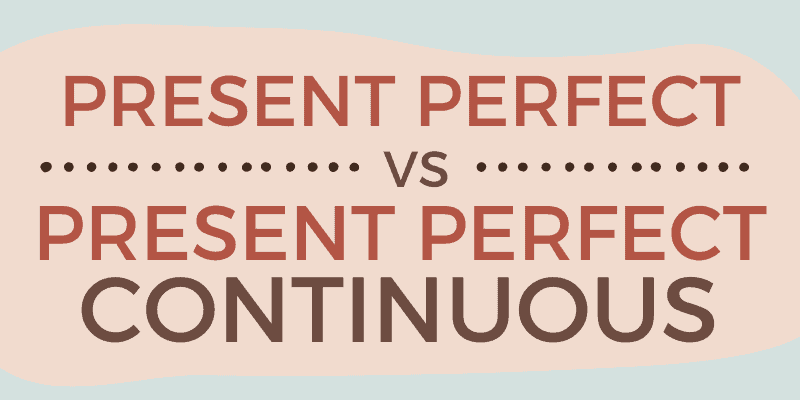Welcome back, language adventurers! In this fifth instalment of our tense-exploration series, we’re tackling a matchup that even advanced learners find tricky: Present Perfect Simple and Present Perfect Progressive (Continuous). Both tenses share a similar structure and talk about the past with a connection to the present, but they are used in subtly different ways. Let’s untangle this knot with clear explanations, fun examples, and a bit of humour.
Present Perfect Simple: The Result-Oriented Tense
The Present Perfect Simple focuses on results or experiences. It’s great for showing that something happened at an unspecified time in the past or for emphasizing the completion of an action.
How to Form the Present Perfect Simple
- Have/has + past participle:
- “I have eaten.”
- “She has visited Paris.”
When to Use It
- Talking About Life Experiences
- “I have climbed a mountain.”
- “She has never tried sushi.”
(We don’t specify when these events happened.)
- Actions with Present Relevance
- “I have finished my homework.”
(The homework is done, and I’m free now.)
- “I have finished my homework.”
- Repeated Actions
- “We have been to that restaurant three times.”
Common Mistakes
- Using Present Perfect Simple with a specific time:
- Wrong: “I have visited Paris last year.”
- Right: “I visited Paris last year.” (Use Past Simple for specific times.)
Present Perfect Progressive: The Duration-Focused Tense
The Present Perfect Progressive highlights the duration of an action or its ongoing nature. It’s perfect for emphasizing how long something has been happening.
How to Form the Present Perfect Progressive
- Have/has been + verb-ing:
- “I have been studying.”
- “They have been working.”
When to Use It
- Actions Continuing Up to Now
- “I have been learning English for three years.”
(The action started in the past and is still happening.)
- “I have been learning English for three years.”
- Recently Stopped Actions with Visible Results
- “She has been running, and now she’s exhausted.”
Common Mistakes
- Using the Present Perfect Progressive with stative verbs:
- Wrong: “I have been knowing her for years.”
- Right: “I have known her for years.” (Use Present Perfect Simple for states.)
- Forgetting the emphasis on duration or ongoing action:
- Wrong: “I have been finished my work.”
- Right: “I have finished my work.” (Use Present Perfect Simple for completed actions.)
How to Decide Which to Use
| Situation | Present Perfect Simple | Present Perfect Progressive |
|---|---|---|
| Emphasis on result or completion | “I have cleaned the house.” | — |
| Emphasis on duration or ongoing action | — | “I have been cleaning the house for hours.” |
| Recent action with visible result | — | “He has been painting, and now his hands are dirty.” |
| Talking about life experiences | “I have traveled to Italy.” | — |
Key Differences
- Focus:
- Use Present Perfect Simple for what has been done.
- Use Present Perfect Progressive for how long it has been happening.
- Action vs. State:
- Action Verbs: Both tenses work.
- “I have read the book.” (focus on result)
- “I have been reading the book.” (focus on duration)
- Stative Verbs: Stick to Present Perfect Simple.
- “I have known him for years.” (not “I have been knowing him.”)
- Action Verbs: Both tenses work.
Exercise: Test Your Knowledge
Choose the correct tense (Present Perfect Simple or Present Perfect Progressive) for each sentence:
- I _______ (read) three books this week.
- She _______ (work) on her project since 8 AM.
- We _______ (travel) to France twice.
- He _______ (study) for his exam all evening.
- They _______ (paint) the walls, and the room looks fresh.
- I _______ (know) her for ten years.
- The children _______ (play) outside for hours.
- She _______ (write) five emails today.
- He _______ (run), and now he’s out of breath.
- We _______ (live) in this house for six years.
Answers
- have read
- has been working
- have traveled
- has been studying
- have painted
- have known
- have been playing
- has written
- has been running
- have been living
Final Tips
- Use Present Perfect Simple when the focus is on what has happened or how many times.
- Use Present Perfect Progressive when the focus is on how long something has been happening or ongoing effort.
With practice, these tenses will become second nature. Soon, you’ll be a pro at talking about the past, present, and everything in between. Keep up the great work—you’re doing amazing! 🌟
If you have enjoyed reading this blog, please ‘like’ it and share it with your friends and colleagues, and if you know anyone who might be interested in my online one-to-one lessons, please do ask them to contact me to discuss how I can help them to excel in English.


Recent Comments